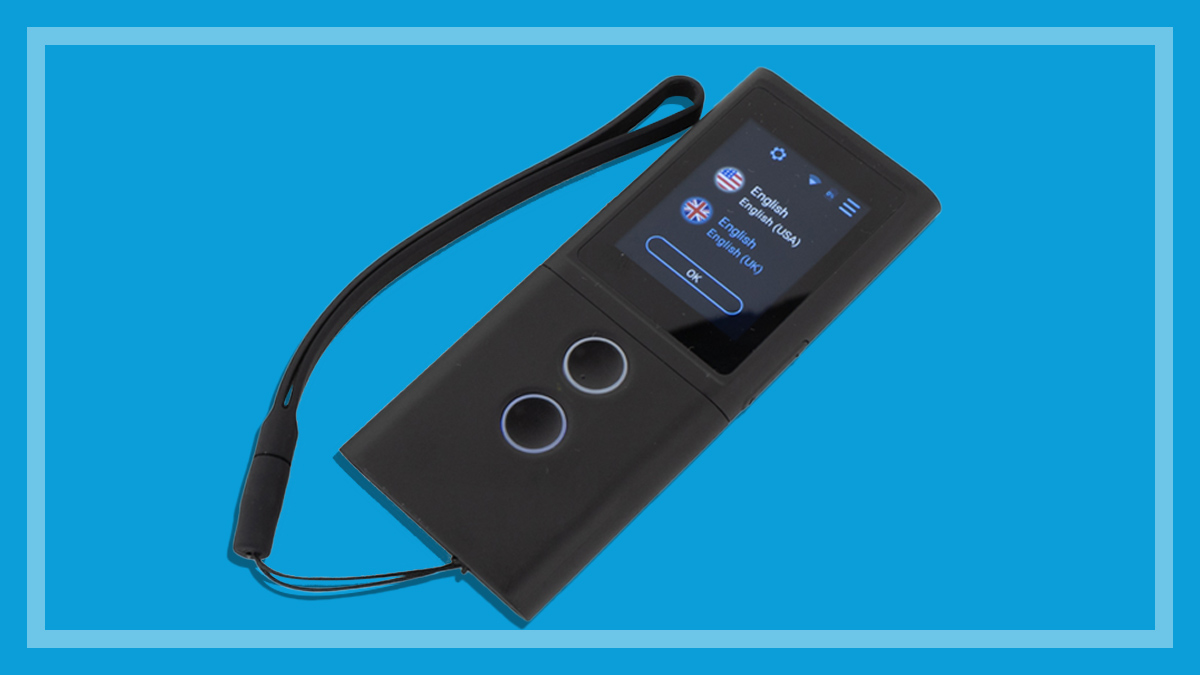Get our independent lab tests, expert reviews and honest advice.
How we test translation devices

Translation devices can be a worthwhile companion and instil a sense of confidence when you’re out in the world trying to communicate with someone who speaks another language.
On this page:
- How we choose what we test
- Translation competency
- Ease of use
- Audio quality
- How we score translation devices
The results of our in-depth testing will help you find a device that translates phrases accurately and clearly across a range of languages (without being too much of a headache to set up and use). Here’s how we do it.
How we choose what we test
We look for readily available translation devices that allow the user to translate one language to another in real time, and our priority is to test what you’ll see in shops or prominently advertised in media, on TV or online.
We check current market figures to see what’s selling well, and we’ll also include models that you’ve requested – if a lot of members want it, we’re going to test it.
The devices in our test are for travelling purposes only. Professional, certified translators exist for important business or legal translations, and the ones we’ve looked at should not be relied upon for these situations.
Translation competency
For our first foray into translation device testing, we focused on conversational translations for travel and used a selection of languages that are spoken and understood by the following CHOICE staff:
- Aurelien Calixte for French recordings
- Audrey Lenain for French recordings
- Deepa Prakash for Tamil recordings
- Uta Mihm for German recordings
- Scott O’Keefe for Japanese recordings.
We assessed each device by playing recorded phrases through a speaker. The recordings were supplied by CHOICE staff in the following test languages: French, German, Japanese, and Tamil. The recordings were of the following set phrases:
- “How much is one piece of cake?”
- “Can you tell me which bus goes to the city?”
- “We are going out for drinks. Would you like to join us?”
- “Excuse me but I seem to be lost. Can you please help me?”
- “I am looking for somewhere to eat. Is there a restaurant close by that you recommend?”
Assessing results translated to English
If the device was able to produce an understandable English result from the test phrases, then it received a score of 80 (very good). The score was reduced depending on the number of attempts required to get a result that could be understood, and a score of 45 (poor) was given if the results could not be understood.
Assessing results translated from English
The speakers of the supplied test languages provided feedback on the output from English to their language. Scores are based on their comments regarding the level of understanding, as well as any other factors such as speed and fluidity of the playback.
Ease of use
We assessed how easy each device is to use by looking at the following aspects:
Device set-up: includes any set-up requirements and processes for connecting to the internet. We also look at the control buttons, the overall layout and labelling.
Charging and ports: covers how each device can be charged and the functions of any other present ports.
Language selection: includes an assessment on how easy it is to select an origin and target language.
Translation process: looks at the steps required to initiate a translation and then how the result is delivered.
Offline usage: whether the device can be used when the internet is unavailable, and if so, what you need to do to carry out translations.
Security: refers to any features that can lock the device and prevent its history from being viewed.
Audio quality
We judged each device for its clarity, smoothness, and accent. We used an Australian accent to judge the audio of each device when playing back English results of our test phrases. If Australian was not an option, we used a UK accent instead.
Devices that exhibited noticeable compression, distortion, sibilance, choppy or speedy playback or robotic-like output all scored lower than those that were clearer and smoother in their playback.
How we score translation devices
The CHOICE Expert Rating, our overall score that determines which products we recommend, is made up of how well each translation device scores for:
- translation competency (50%)
- ease of use (30%)
- audio quality (20%).
Weightings are listed in brackets. We recommend translation devices with a CHOICE Expert Rating of more than 70%.






